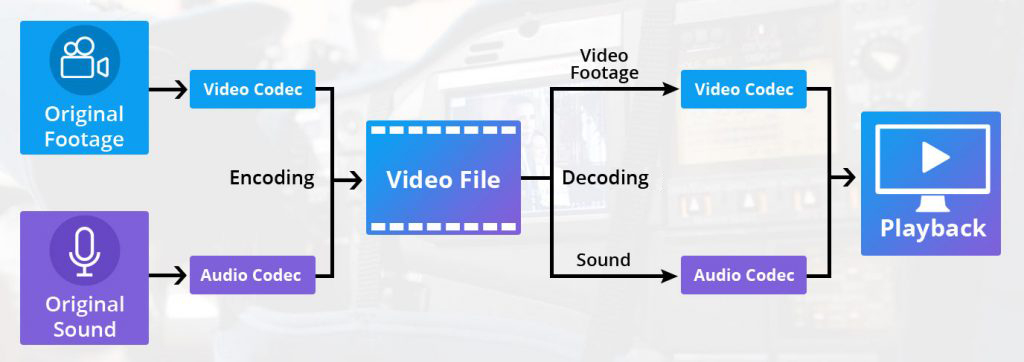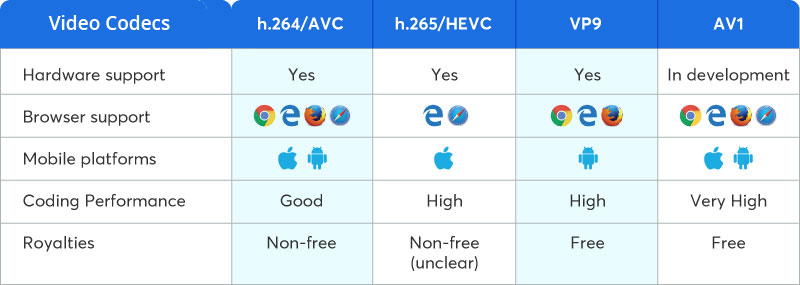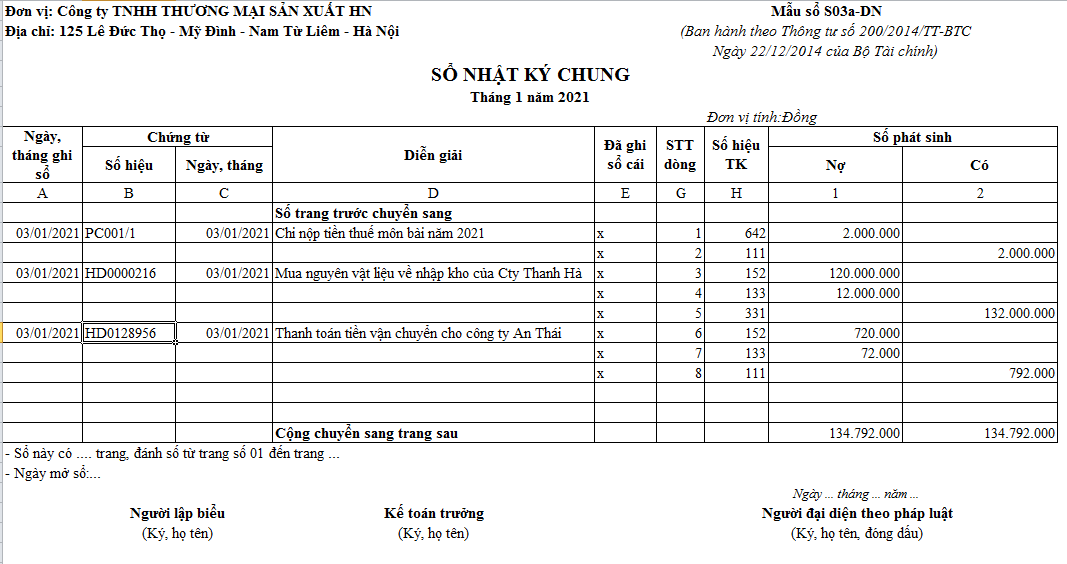Cùng xem AV1-HEVC-VP9: Which is the best quality video codec for online streaming 05 July 2019 trên youtube.
- Cách cộng, trừ ngày tháng năm trong Excel để tính số ngày siêu nhanh cho kế toán
- những điều cần biết về kế toán
- Nhà hộ sinh đầu tiên ở Hà Nội và sự ra đời của Cây đa nhà bò
- Cách vẽ biểu đồ đường trong Excel cực dễ, lưu ngay để dùng!
- Tham vấn là gì? Những thông tin cần nắm rõ về kỹ năng tham vấn 2021
Today, video stats account for 80 percent of global consumer internet traffic.
And as per survey predictions, by 2021 video will be responsible for an unprecedented 85% of total internet consumption worldwide.
In order to handle this intense delivery load and at the same time, distribute videos seamlessly across the internet, the video streaming companies have started adopting advanced video compression tools, also known as Video Codecs. Using high-level coding formats, the service providers are unblemishedly condensing the large video files for smooth delivery across multiple online channels.
∴Fact you must know
“Streaming and Chilling would never have been coined together without the invention of video codecs. It’s like, codecs are the reason, viewers comfortably stream their favorite videos even with limited bandwidth.”
No doubt, Codecs play a key role in the distribution of digital videos online.
However, choosing the right video codec involves a lot of confusion, as the options are available in plenty. But don’t worry, here in this blog, our primary goal is to educate readers about video codecs and discuss the best-quality codecs for video streaming.
What is a Video Codec?
A video codec is a ready-made software program that is used for compressing and decompressing video streams. Mainly content aggregators, distributors, and streaming service owners integrate video codec in their applications to tightly compress the high-definition videos into a more manageable size, ensuring seamless content storage as well as delivery.
The best thing about using video codec is, no compromise with the video quality during the compression and decompression process. It’s simple, codecs are in charge of interpreting all the data and content stored in the video files and controlling how the video is streamed on the user’s screen.
Presently, AVC is the most commonly used video codec because of it’s open-sourced and royalty-free configurations.
Role of codec in Video streaming
Viewers love streaming videos online, especially when there is no buffering or lag issues. They simply prefer to stream high-definition videos in maximum resolution.
Now considering the above fact technically, high-quality video streams involve high bit-rate and more data storage. Such files require a lot of processing power to encode and a high-speed internet connection to download for playback.
∴Fact you must know
“When a file streams at thirty-frames per second (high-quality video file), the requirement for storage space and bandwidth balloons quickly. If the streaming platform, delivering the video, fails to meet the requirements, then there are high chances, the end-users will experience trouble in watching the videos online.”
Xem Thêm : Tranh sơn mài là gì ? Định nghĩa nghệ thuật tranh sơn mài
Well, here comes the need for video codecs, as those are exclusively designed to deal with such problems.
At the core, codecs are advanced video compression tools that work on encoding and decoding algorithms. In order to deliver uninterrupted video streams on user’s screen, codecs eliminate out certain un-necessary data from the videos and reduce the file size without hampering its overall quality.
Once compressed, all the components of video are wrapped into a specific file format, termed as Containers. Generally, the containers store video codecs, audio codecs, closed captioning, and other important metadata, supporting multiple file formats such as MKV, MP4, WMV, AVI, MOV, QT, and AVCHD.
For more details on video containers, read our blog How to Choose the Best Video Container Format for Live Streaming.
Depending on the other video codec that is installed in the user’s device, the container then determines which programs are compatible for the stream and accordingly distributes components for decompression. Further, the video codec at the user-end decodes the file and ensures seamless streaming.
So, this is how a video codec acts both at the source end (during encoding) to compress the video file and before playback (during decoding) to decompress it.
Now though you are clear about what is a video codec and how it works, let’s have a look at the most efficient & performance oriented video codecs in the OTT space.
Most Commonly Used Video Codecs
-
H.264/AVC
H.264 or AVC (Advanced Video Coding) is a widely supported legacy codec that enables playback on both out-dated and new devices. Because of its motion-compensation-based video compression standards, AVC is highly recommended for recording, compression, and distribution of video files across multiple devices including Laptops, Mobile Phones, Desktops, Tablets, Smart TVs, and gaming consoles.
Apart from streaming market, H.264 holds a significant penetration in Cable Broadcasting and Blu-Ray disk distributions. Mostly, AVC is combined with AAC audio codec and is stored in 3GP, MOV, F4V, TS, and MP4 Containers.
The most exciting benefit of integrating H.264 is the distribution of 50% smaller files as compared to previous generation codecs – MPEG-2 and H.263.
-
H.265/HEVC
H.265 or HEVC (High-Efficiency Video Coding) is termed as the spiritual successor of AVC. It delivers 25% to 50% better compression efficiency with improved or same-level of video quality. Similar to AVC, it supports 8K UHD resolution, but comparatively delivers smaller files that require low bandwidth for streaming.
Considering the content capturing systems in next-generation HDTV displays, HEVC is designed with advanced video coding layers, parallel processing tools, motion vector predictions, and other essential coding extensions.
Presently, H.265 video codec is competing with the open-sourced and royalty-free AV1 coding format and it’s Main10 profile has been incorporated into nearly all supporting hardware.
-
AV1
Xem Thêm : Hướng dẫn sử dụng Microsoft Power Point
AV1 is truly the next-generation video coding format developed by Alliance for Open Media (AOM), along with the support of Google, Amazon, Cisco, Microsoft, Mozilla, and Netflix. It is an open, royalty-free video codec, which is specifically designed to improve the encoding and decoding efficiency by 30% over HEVC’s performance.
Because of its low computational footprints and quick hardware optimization abilities, AV1 delivers highest-quality real-time videos, scalable to any modern device at any bandwidth.
The algorithms used in AV1 are quite more advanced than HEVC. This newer codec is intended for use in WebRTC and HTML5 Web Video together with Opus audio codec format.
-
VP9
VP9 is a royalty-free alternative to HEVC, developed by Google. Every chrome browser, Android phones, and even Google’s own video streaming platform YouTube, supports VP9 for seamless delivery of videos to end-users.
The codec offers better video quality at the same bit rate as HEVC and thus is highly effective for delivering 4K HD videos online. As the efficiency and performance of VP9 are pretty similar to AV1, it is often termed as AV0 (an earlier version of AV1).
Which is the Best Video Codec for Streaming?
Let’s go straight to the point.
H.264 or AVC is an older version of video coding format. With the introduction of numerous advancements in compression techniques and new video technologies like HDR & VR, it’s for sure, integration of AVC codec will soon be replaced.
HEVC, the successor of AVC, has been in place for almost six years, but still content distributors are hesitating to adopt its compression standards, because of expensive and tedious configurations.
Google’s VP9 is a powerful codec doubtlessly, but it failed to gain widespread adoption because of its complex patent licensing process. Considering VP9’s learned-lessons, Google later decided to support the development of AOM’s royalty-free AV1.
Now talking about the latest video codec – AV1 is exclusively designed to be more performant than all the available codecs in the market. It is an open-sourced codec with hassle-free patent licensing, and the integration manages to save upto 30% of the bandwidth for the same image quality.
So, if you are looking for a next-generation performance-oriented video codec that is limited by bandwidth and licensing cost, AV1 is the perfect codec. Else, you can go with HEVC for its real-time, and low latency encoding process. But remember, as time will pass on, both the streaming industry and technological developments will ultimately shift towards AV1 and its successors.
At Muvi, we definitely believe that AV1 will have a positive impact on the streaming industry in the next five years. Considering that, we offer a fully-managed built-in streaming engine for multi-codec video delivery using dedicated servers.
Check out the configurations of our 2x faster encoding and transcoding extensions for details.
Nguồn: https://dongnaiart.edu.vn
Danh mục: Cẩm Nang Việc
Lời kết: Trên đây là bài viết AV1-HEVC-VP9: Which is the best quality video codec for online streaming 05 July 2019. Hy vọng với bài viết này bạn có thể giúp ích cho bạn trong cuộc sống, hãy cùng đọc và theo dõi những bài viết hay của chúng tôi hàng ngày trên website: Dongnaiart.edu.vn








